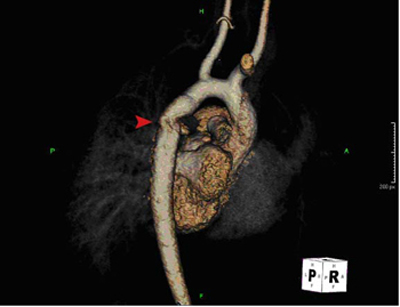Cardiac MRI > Pathology > Congenital Heart Disease > Congenital Aortic Abnormalities
Congenital Aortic Abnormalities
![]()
Coarctation of the aorta is a focal narrowing of the aorta which most often occurs near the site of the ligamentum arteriosum. Coarctation often has associated abnormalities such as a bicuspid aortic valve and ventricular septal defect. Collateral pathways around the coarctation, such as the intercostal arteries, may grow large to circumvent the stenosis. A poststenotic dilation may be evident just distal to the site of the coarctation. Velocity encoded gradient echo imaging can be used to determine the pressure gradient across the coarctation, however, this often underestimates the severity of the disease due to collaterals diverting flow around the stenosis to the distal aorta. Alternatively, flow quantification can be performed just distal to the coarctation and at the level of the diaphragm. The degree of collateralization can be determined from the fraction of increased flow at the level of the diaphragm as compared to just distal to the coarctation. Contrast enhanced MRA can be performed to show the coarctation and collateral vessels.
Marfan syndrome is a hereditary disorder which causes aortic root dilation, tall stature, pectus excavatum, and myopia. The aortic root dilation is the most problematic and patients often undergo regular imaging examinations since this is sometimes treated with prophylactic surgery to prevent rupture. Echocardiography is often used as the primary imaging modality, but is not ideal due to the complex anatomy of the aortic root and the chest wall deformities that may be present in Marfan's patients.

This 3-D reconstructed MRA image shows a stenosis near the area of the ligamentum arteriosum (arrowhead) along with a prestenotic aneurysm in this patient with an aortic coarcation.
This cine shows a dilated proximal portion of the ascending aorta (arrow) in a patient with Marfan's syndrome. Notice that there is loss of the sinotubular junction of the aorta, a common finding in Marfan's syndrome.
